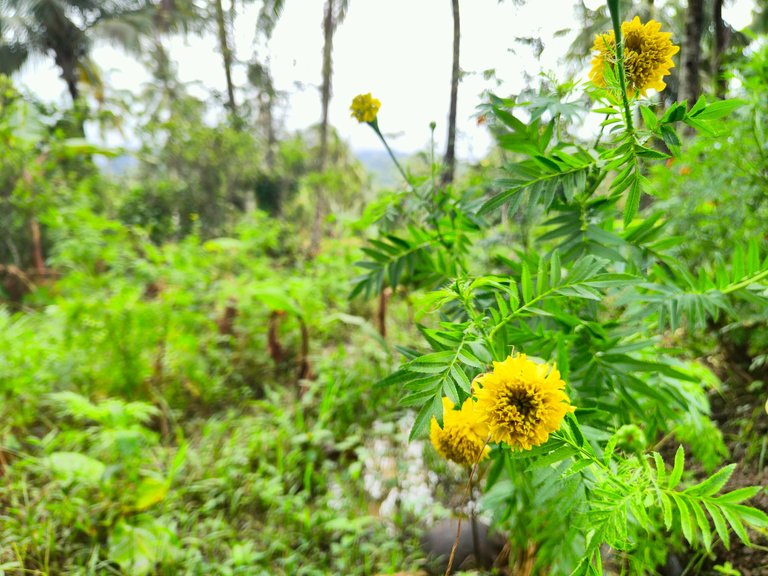
You cannot escape the responsibility of tomorrow by evading it today. — Abraham Lincoln
The older farmers are truly wise.
Decades of expertise and dedicated experience distilled into rare words of wisdom.
Adjacent to our farm, is our distant relatives' agricultural lands. So, last July, one of our neighbors and also our distant relative, Tatay Kuwa, requested that we also begin sowing rice at the same schedule with them.
Rice Harvest and Seasonal Labor
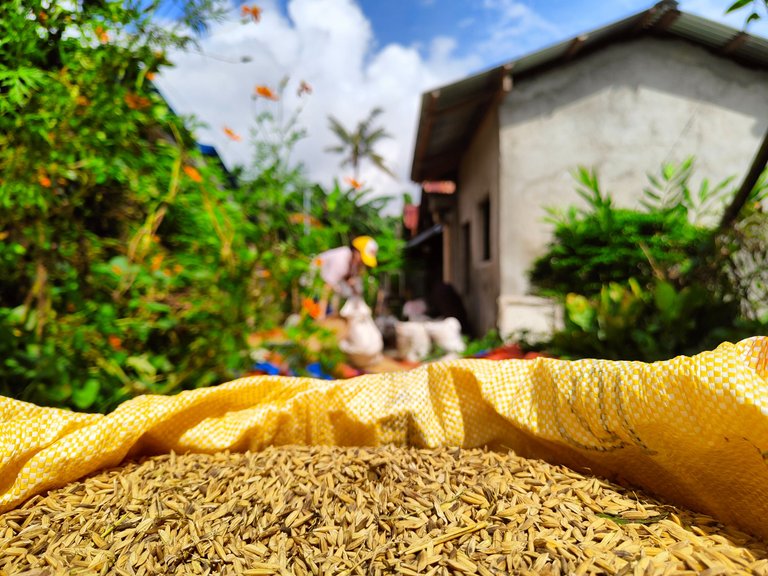
Growing rice simultaneously with other farmers helps lessen pest damage and also makes labor more feasible. In less than four months, the rice harvest season is almost coming to an end.
The 80/20 rule applies in farming now, 80% to the owner and the rest will be to the workers.
The new mode of operation for the rice harvest is through contract labor and the seasonal laborers will take their 20 percent share of the harvest aside from the traditional free lunch. The contract includes manual harvest, threshing, and delivery to the owner's storage facility.
Less than two weeks ago, we had our rice harvest, just before the typhoon season had started! We harvested more than 64 baros of rice grains but with a clean share of 48 baros which is equivalent to 16 sacks of 40 kilogram rice grains.
After that, we needed to temporarily store the rice grains due to the constant rainfall in the succeeding days.
Typhoons and Climate Disasters
In the Philippines, typhoons are pretty normal. We have 25 typhoon names readied each year plus 10 more incase it exceeds the list. What's not normal is the number of Category 4 and 5 typhoons coming in each year.

PAGASA: Tropical Cyclone Information
Recently, I tumbled over the ongoing challenge with Resiliency, Adaptability, and Sustainability. Which is realistic and which is ideal?
For me, a few headcount of advocates and practicioners may be irrelevant compared to the big industries and the consumerist culture—but these counterculture of resilient, adaptive, and sustainable communities will someday become relevant, important, and urgent.
Starting November until the end of the year, more typhoons will hit our region, so we must really adapt with the stronger typhoons to stay resilient.
A few hectares of reforestation is not enough, but it is better than nothing. Trees stores carbon for the long-term while also acting as windbreak and lessen erosion. Fruit trees on the otherhand also gives compounding sustenance.
October 27th. The sun came out and was long enough for the initial sun-drying of the rice grains, else it would begin deteriorating due to moisture and fermentation. Prolonged storage of moist rice grains will lead to discolored and crumbly rice.
Low quality means low price.
Earlier, the news said it was Signal No. 1 typhoon, so it was expected that it would only have minimal gusts but with prolonged heavy rains that would last the whole day.
The clouds begin to cover and when we finished putting everything back to the sacks and putting it in storage the rain started, phew!
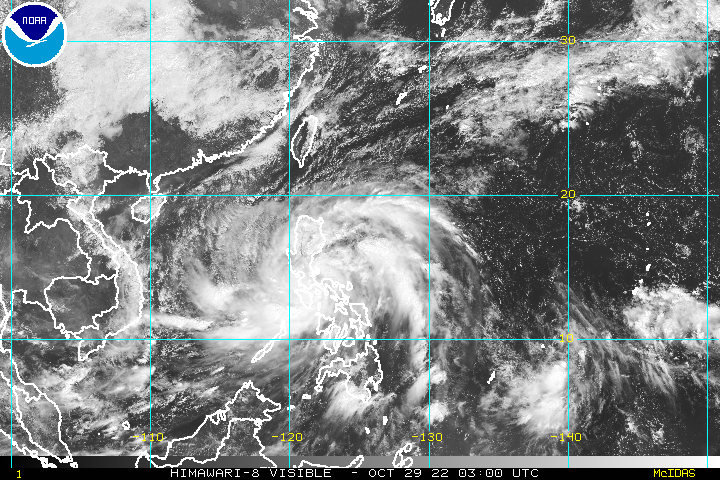
NOAA: HIMAWARI-8 West Pacific Weather Satellite Image
October 28th. The next morning, it started raining heavily and the power was cut off. The rainwater flooded the streets in our neighborhood as the heavy rains persisted, with no means of communication, there will be no news until the electricty would be back.
October 29th. On the next day, some isolated rainfall continuee until later in the afternoon. I decided to visit the orchard to check for the damage. The flood has receded, but the signs were still visible.
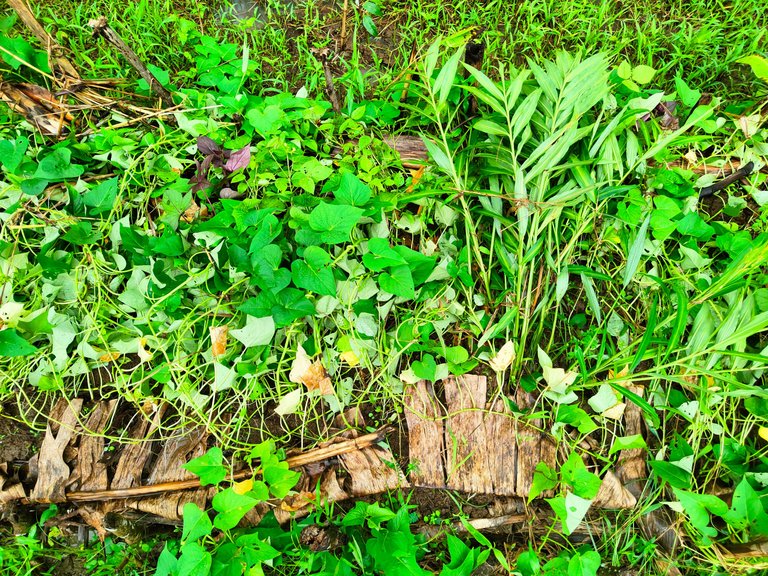
Remember the typhoons 'Odette' in December 2021 and 'Agaton' and 'Basyang' in April 2022? Pretty bad experience, luckily the typhoon now was still forgiving—but we shouldn't be too complacent.
No fallen trees.
Some uprooted melons.
Some debris here and there.
Toppled crops, but not severe.
It will all recover within a week if the sun will be back.
October 30th. Today, the sun came out like nothing happened. Great to continue sun-drying the rice grains before it discolors and deteriorate further.
Gardening Updates
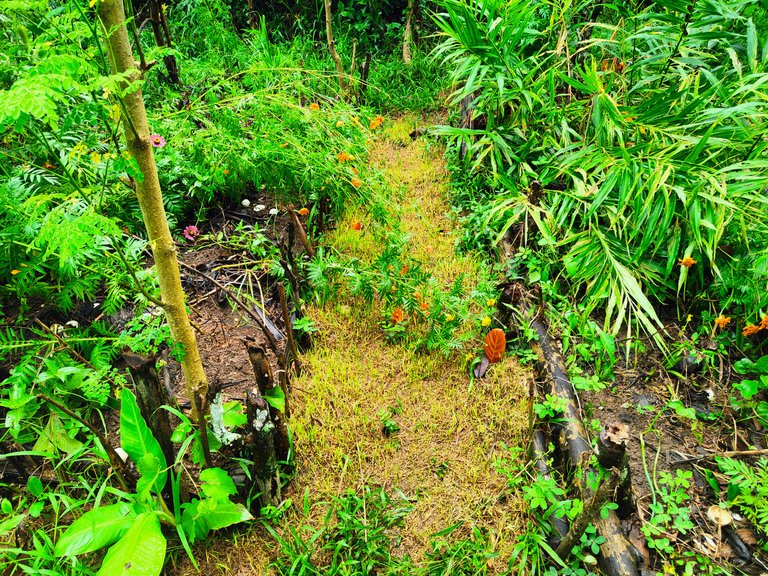
Hmm... I'm postponing some of the work at the orchard for now. The crops will recover in a week though.
Maybe in mid-November I'll start the repairs in the original permaculture garden and continue the work on the new raised beds. Then in December, I'll be sourcing some gravel to fill along the mud paths and invest in growing more fruit trees again.
Note that the remaining typhoons this year will pass at our region, so we must also do some prepping just in case another month-long outage occurs.
Our world right now is battered with an assortment of climate disasters, but this doesn't need to be our future. Recently, I have read about solarpunk counterculture, an aesthetic of an alternate world post-hierarchy and post-consumerism.
Is it a plausible future, what are your thoughts?
PINNED POSTS
 | Clearing the Damage After the Storm Instead of falling into anxiety, I took time to make use of what the storm had given. |
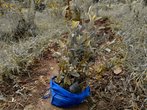 | Building Abundance with More Fruit Trees Amid the Economic Turmoil This year, I planned to initially plant 100 trees wherever possible until the year ends. |
 | Using Saltwater and Fire to Heal a Permaculture Garden Plant debris becomes natural mulch and organic matter. |
 | Harvesting Cucumbers After a Year of Labor As crops mature, harvest season began as well. |
 | Fermenting Fish Amino Acid for the Garden Crops It would be a sin to throw away such things, even the food scraps I turn it to compost now. |
 |  |  |  |  |  |  |
|---|

About Me
@oniemaniego is a software developer, but outside work, he experiments in the kitchen, writes poetry and fiction, paints his heart out, or toils under the hot sun.
 | Onie Maniego / Loy Bukid was born in rural Leyte. He often visits his family orchards during the summers and weekends, which greatly influenced his works. |

Support with Crypto
Bitcoin 34hdQNHHFUodqegi2wwNeNw2p35ewvnaXQ
Ethereum 0xd36126ab2463c3404cca1c97d8f3337917dfd113
Not yet on Hive? Earn while blogging.
Sign up with PeakD | Ecency
